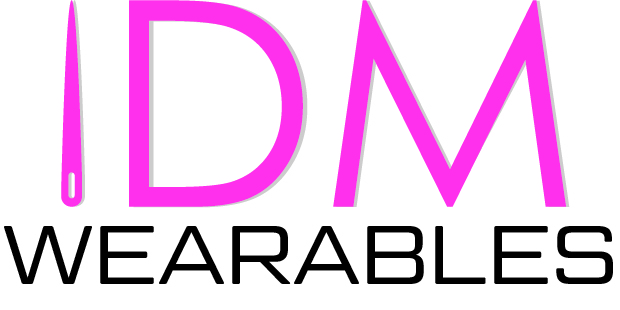Attachment to fabric:
All though copper tape is a “tape” and has adhesive on the back, we found that it could easily peel of the fabric. It’s fine for a quick prototype, but for a more permanent swatch, we used iron-on adhesive, also known as seam tape. Lining the swatch with seam tape and heating it with an iron creates a very strong bond between the tape and the fabric. For more information, check our post on iron-on interfacing.
Attachment between components:
In this test, the components are soldered directly to the copper tape. The components are all standard electronic components and not specially made for e-textiles. The components are also sewn to the fabric. The vibration motor is kept in place by putting a piece of fabric over it, like a pocket, and sewing around the motor, so it can’t slip out.

Pros and Cons:
Pros: Copper tape is cheap and can be found at most hardware stores. It’s a great way to quickly make a trace, and you can solder standard components to it, so you don’t need to get special eTextiles supplies. It is very conductive, similar to wire, and you can expect very little resistance. It is completely flat and will be discrete in your garment.
Cons: It is not very durable. It can tear easily or peel off the fabric. However, adding the iron-interfacing helps solve that problem. It is not insulated, so lay-out your project carefully and insulate any aspects that could cause a short, for example, by covering the circuit with another piece of fabric.




